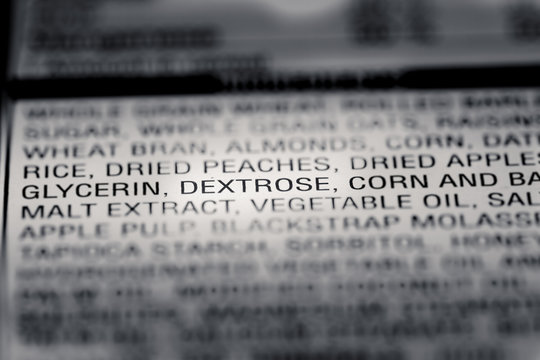
Nicotine pouches are a type of smokeless, tobacco-free nicotine product that contain nicotine and other ingredients. You may ask more specifically, what do nicotine pouches contain? The specific ingredients can vary depending on the brand and flavor of the product, but in general, the ingredients in nicotine pouches include:
- Nicotine – This is the primary active ingredient in nicotine pouches. It is a stimulant drug that affects the central nervous system and can be addictive.
- Cellulose – This is a plant-based material that is used as a filler in some nicotine pouches.
- Salt – Some nicotine pouches contain salt, which can help to enhance the flavor and provide a slightly salty taste.
- Propylene glycol – This is a clear, odorless liquid that is used as a humectant to help keep the pouches moist.
- Flavorings – Nicotine pouches can come in a variety of flavors, including mint, citrus, and berry. Flavorings are added to enhance the taste of the product.
Nicotine in Pouches
Nicotine is a naturally occurring alkaloid compound found in tobacco plants. It is a potent central nervous system stimulant and is the primary addictive component in tobacco products. The chemical composition of nicotine is C10H14N2, which means it contains 10 carbon atoms, 14 hydrogen atoms, and 2 nitrogen atoms.
When nicotine is inhaled or ingested, it rapidly crosses the blood-brain barrier and binds to specific nicotinic acetylcholine receptors in the brain. This triggers the release of neurotransmitters such as dopamine, norepinephrine, and acetylcholine, which can produce a range of physiological and psychological effects, including:
- Euphoria and pleasure
- Increased alertness and concentration
- Decreased appetite
- Increased heart rate and blood pressure
- Constricted blood vessels
- Relaxation of muscles
- Increased respiration
Nicotine’s effects can vary depending on the individual, the dose, the route of administration, and other factors. Regular use of nicotine can lead to physical dependence, which can cause withdrawal symptoms such as irritability, anxiety, restlessness, and difficulty concentrating if nicotine use is stopped or reduced.
It’s important to note that while nicotine itself is not a carcinogen, tobacco products contain a variety of harmful chemicals that can cause cancer and other health problems. Therefore, the use of tobacco products, including nicotine-containing products such as cigarettes and nicotine pouches, is associated with a wide range of health risks, including lung cancer, heart disease, and stroke.
Cellulose in Nicotine Pouches
Cellulose is a plant-based material that is commonly used as a filler in many different products, including nicotine pouches. The primary purpose of cellulose in nicotine pouches is to help create a consistent texture and provide a stable platform for the other ingredients.
Cellulose is a naturally occurring carbohydrate found in the cell walls of plants, and it is often extracted from wood pulp or cotton fibers. It is a biodegradable and renewable resource, which makes it a popular choice for manufacturers looking to reduce their environmental impact.
In nicotine pouches, cellulose can help to absorb and distribute the flavorings and nicotine evenly throughout the pouch. It can also help to prevent the pouch from breaking or tearing, which can lead to leakage and inconsistent nicotine delivery. Additionally, cellulose can help to provide a slightly fibrous texture that some users may find appealing.
Overall, the use of cellulose in nicotine pouches is primarily a functional choice, as it helps to ensure that the product is consistent and effective.
Humectant in Nicotine Pouches
Most nicotine pouches contain a humectant to help keep the pouches moist and prevent them from drying out. Propylene glycol is a common humectant used in nicotine pouches, as it is an effective moisture-retaining agent and also helps to enhance the flavor and nicotine release. Some nicotine pouches may also contain other humectants such as glycerin or water. It’s worth noting that the use of a humectant in nicotine pouches can also affect the shelf life and stability of the product.
Propylene glycol (PG) is a common ingredient used in a variety of consumer products, including cosmetics, food, and pharmaceuticals, as well as in nicotine-containing products such as e-cigarettes and nicotine pouches. PG is generally recognized as safe by regulatory authorities when used in small amounts, but it can have some potential health effects, particularly when used in high concentrations or over long periods of time.
It’s worth noting that the concentration of PG used in nicotine-containing products such as e-cigarettes and nicotine pouches is generally considered safe when used as directed. However, individuals with pre-existing respiratory or skin conditions, as well as pregnant or breastfeeding women, should exercise caution and consult with a healthcare professional before using products containing PG.
Different flavorings
Nicotine pouches may contain a variety of flavorings to enhance the taste of the product. The type of flavorings used can vary depending on the manufacturer and the specific product, but here are some common types of flavorings used in nicotine pouches:
- Fruit flavors: Nicotine pouches may contain flavorings that mimic the taste of different fruits, such as citrus, berry, or tropical fruits.
- Mint and menthol flavors: Mint and menthol flavorings are also commonly used in nicotine pouches to provide a cool and refreshing sensation.
- Herbal and spice flavors: Some nicotine pouches may contain flavorings that are derived from herbs and spices, such as cinnamon, ginger, or tea.
The substances used to create these flavorings can vary widely and may include natural or artificial flavors and aroma compounds. Natural flavors are derived from natural sources, such as fruits, vegetables, or spices, while artificial flavors are typically made from synthetic chemicals. Aroma compounds are substances that contribute to the overall aroma of a product and may be derived from natural or synthetic sources.
It’s worth noting that the specific substances used in flavorings can vary widely and may not be disclosed by the manufacturer. Some concerns have been raised about the potential health risks of certain flavorings, particularly those that are derived from artificial sources. That’s why it is important to purchase products from an online retailer such as Nicopods.ie that engages in a rigorous vetting process for all products sold online. However, the use of flavorings in nicotine pouches is generally recognized as safe when used in moderation and in accordance with regulatory guidelines.
